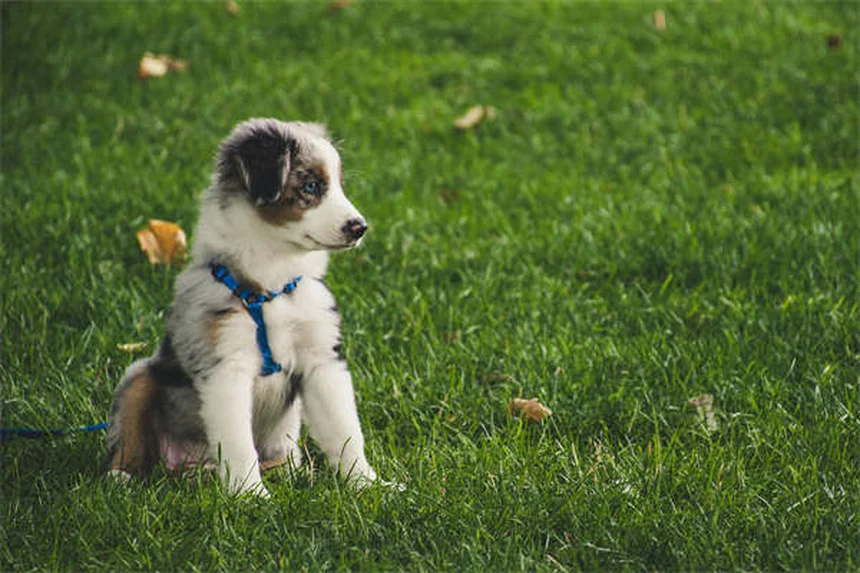What is peritonitis in cats? Peritonitis is a serious abdominal inflammation that can become life-threatening if left untreated. The answer is clear: this condition requires immediate veterinary attention. I've seen too many cat owners wait until it's too late, and trust me, you don't want to be in that position.When your cat's belly lining gets inflamed, it's like setting off a five-alarm fire in their body. The peritoneum - that delicate membrane surrounding their organs - becomes irritated, causing pain, fever, and potentially organ failure. The good news? With prompt treatment, many cats recover fully. In this guide, we'll walk through the warning signs you shouldn't ignore and what treatment options your vet might recommend.
E.g. :Zantac for Pets: Safe Uses, Side Effects & Vet-Approved Tips
- 1、Understanding Peritonitis in Cats
- 2、Spotting the Warning Signs
- 3、What Causes This Painful Condition?
- 4、How Vets Solve the Mystery
- 5、Treatment Options That Work
- 6、Road to Recovery
- 7、Your Burning Questions Answered
- 8、Expanding Our Understanding of Feline Peritonitis
- 9、Financial Considerations and Planning
- 10、Nutrition's Role in Recovery
- 11、Behavioral Changes to Watch For
- 12、When to Seek Immediate Help
- 13、FAQs
Understanding Peritonitis in Cats
What Exactly Is Peritonitis?
Imagine your cat's belly as a busy city where all the important organs live - stomach, liver, intestines, and more. Now picture a thin, protective blanket (the peritoneum) covering everything. When this blanket gets irritated and swollen, we call it peritonitis.
This condition isn't just uncomfortable - it's like having the worst bellyache imaginable. The swelling can range from mild to severe, and trust me, your furry friend will let you know something's wrong. The good news? Your vet can play detective to find the cause and help your cat feel better.
Why Should You Care About the Peritoneum?
That thin membrane does more than just cover organs. It's like the highway system of the abdomen, carrying:
- Blood vessels (the delivery trucks)
- Nerves (the communication lines)
- Lymphatic vessels (the waste management system)
When inflammation hits, this entire transportation network goes haywire. That's why peritonitis isn't just a local problem - it can affect your cat's whole body.
Spotting the Warning Signs
 Photos provided by pixabay
Photos provided by pixabay
Physical Symptoms You Can't Miss
Your cat won't be able to tell you "my belly hurts," but they'll show it in other ways:
| Symptom | What You Might Notice |
|---|---|
| Abdominal pain | Meowing when touched, bloated belly, avoiding movement |
| Strange positions | Head down, rear up - like a yoga pose gone wrong |
| Digestive issues | Vomiting, diarrhea, or refusing food |
Ever seen your cat look like they're doing downward dog for no reason? That's not a new fitness trend - it's their attempt to relieve abdominal pressure.
Systemic Signs That Mean Trouble
The problems go beyond just belly pain. Watch for:
Fever, rapid breathing, or yellow gums/eyes - these are red flags that the inflammation is affecting the whole body. That yellow discoloration? It's called jaundice, and it often points to liver issues or specific viruses like FIP.
What Causes This Painful Condition?
Common Culprits Behind Peritonitis
Think of the abdomen like a pristine swimming pool. Now imagine someone dumping garbage into it. That's essentially what happens with peritonitis. The "garbage" can be:
- Bacteria from a ruptured intestine
- Bile from a burst gallbladder
- Urine from a damaged bladder
Did you know that even a simple surgery complication can lead to peritonitis? If stitches come undone after intestinal surgery, bacteria can leak out like uninvited party crashers.
 Photos provided by pixabay
Photos provided by pixabay
Physical Symptoms You Can't Miss
Some causes are rarer but just as dangerous:
Pyometra in unspayed females (an infected uterus) or prostate abscesses in males (extremely uncommon but possible). Trauma from car accidents or falls can also rupture organs, spilling their contents into that delicate abdominal space.
How Vets Solve the Mystery
The Diagnostic Process Starts Simple
Your vet will begin with what we call the "nose-to-tail" exam. They'll check everything from gum color to belly tenderness. Then comes the lab work - blood tests can reveal infection, organ problems, or dehydration.
Ever wonder why vets need so many tests? Here's why: peritonitis has many possible causes, and we need to pinpoint exactly which villain we're dealing with to choose the right treatment.
Advanced Detection Methods
When basic tests aren't enough, vets bring out the big guns:
- X-rays to spot fluid or gas where it shouldn't be
- Ultrasound to examine organ textures and spot leaks
- Fluid analysis if there's abdominal swelling
That last one is fascinating - we can often tell what's wrong just by looking at the belly fluid under a microscope. It's like reading tea leaves, but scientific!
Treatment Options That Work
 Photos provided by pixabay
Photos provided by pixabay
Physical Symptoms You Can't Miss
Here's a hard truth: peritonitis is an emergency. Your cat will likely need hospitalization for:
- IV fluids to combat dehydration
- Pain medication (because nobody should suffer)
- Antibiotics to fight infection
Think of it as a spa day, but with more needles and less relaxation. The exact treatment depends on the cause - sort of like how you'd fix a leaky pipe differently than a broken window.
When Surgery Becomes Necessary
Many cases require going under the knife. Why? Because if there's a hole in an organ, we need to patch it up! Common surgical fixes include:
Repairing torn intestines, removing infected uteruses, or draining abscesses. Post-op care is intensive but gives your cat the best shot at recovery.
Road to Recovery
The Healing Timeline
Recovery isn't instant - it's more like a marathon than a sprint. Mild cases might improve in days, while severe ones take months. And yes, there's always a chance of setbacks, even with perfect care.
Here's a comforting thought: cats are tough cookies. With proper treatment, many bounce back surprisingly well. Your job? Follow medication schedules exactly and serve those special bland diets like you're running a feline gourmet restaurant.
Long-Term Management Tips
Some cats need lifelong dietary changes after peritonitis. Others might require periodic check-ups to catch any recurring issues early. It's all about creating a new normal that keeps your cat healthy and happy.
Your Burning Questions Answered
Is FIP the Same as Regular Peritonitis?
Great question! FIP (feline infectious peritonitis) is like the evil cousin of regular peritonitis. Both cause abdominal inflammation, but FIP comes from a specific virus and is much harder to treat.
Can Cats Survive This Condition?
Here's the honest truth: untreated peritonitis is usually fatal. But with prompt vet care? Many cats make full recoveries. The key is acting fast at the first signs of trouble.
Remember that time your cat knocked over your favorite vase but you forgave them because of those adorable eyes? Now's when they need you to return the favor with some TLC and quick action.
Expanding Our Understanding of Feline Peritonitis
The Emotional Toll on Pet Owners
When your cat gets sick with something as serious as peritonitis, it's not just their physical health that suffers. You might find yourself lying awake at night worrying about vet bills or feeling guilty about not noticing symptoms sooner.
Let me tell you something important - these feelings are completely normal. I've seen countless pet parents go through this emotional rollercoaster. The good news? Modern veterinary medicine has come a long way, and many cats recover beautifully with proper treatment. Just last week, I saw a previously lethargic cat named Whiskers doing backflips (okay, maybe slight exaggeration) after recovering from peritonitis!
Prevention Strategies Worth Considering
While we can't prevent every case of peritonitis, there are several practical steps you can take to reduce risks:
Regular wellness exams help catch potential issues early. Think of them like taking your car for oil changes - preventative maintenance saves you from bigger problems down the road. Spaying female cats prevents pyometra, one of the conditions that can lead to peritonitis. And keeping toxic substances out of reach reduces chances of intestinal damage.
Here's a fun fact: simple things like monitoring your cat's litter box habits can give you early warning signs. Changes in urine or stool frequency might indicate abdominal discomfort before more obvious symptoms appear.
Financial Considerations and Planning
Understanding Treatment Costs
Let's talk dollars and sense (see what I did there?). Peritonitis treatment can range from $800 for mild cases to $5,000+ for severe ones requiring surgery and extended hospitalization.
| Treatment Component | Average Cost Range |
|---|---|
| Diagnostic Tests | $200-$800 |
| Hospitalization (per day) | $75-$200 |
| Emergency Surgery | $1,500-$3,500 |
But here's the silver lining - pet insurance can be a lifesaver (literally). Many policies cover 70-90% of these costs after deductibles. Setting aside even $20 per month in a pet emergency fund can make a huge difference when crisis strikes.
When Costs Become Overwhelming
What if the treatment estimate makes your eyes water like a sad kitten video? Many vets offer payment plans, and organizations like the Humane Society have assistance programs. Don't be afraid to ask about options - we'd much rather help you find solutions than see a pet go untreated.
Remember that viral video of the cat who stole a whole pizza? Well, skipping just two pizza nights could cover your cat's pain medication for a week! Priorities, right?
Nutrition's Role in Recovery
The Healing Power of Proper Food
After peritonitis, your cat's digestive system needs TLC. Your vet might recommend:
Highly digestible prescription diets that are gentle on healing intestines. These special foods often contain prebiotics to support gut bacteria and extra protein to aid tissue repair. Some cats need temporary feeding tubes until they can eat normally again - don't worry, most adapt to these surprisingly well!
Did you know that warming food to body temperature (about 100°F) can make it more appealing to recovering cats? It releases aromas that stimulate appetite. Just test it on your wrist first - no burnt kitty tongues allowed!
Hydration Is Everything
Here's something many pet owners overlook - water is just as crucial as food during recovery. Dehydration can slow healing and make medications less effective. Try offering:
- Multiple water bowls in different locations
- Pet water fountains (cats love moving water)
- Wet food mixed with extra warm water
I once had a client who added tuna juice to water to encourage drinking. It worked like magic, though I don't recommend making this a long-term habit unless your vet approves!
Behavioral Changes to Watch For
Personality Shifts During Illness
Your normally social butterfly might become withdrawn or your independent cat suddenly clingy. These changes aren't just mood swings - they're important clues about how your cat feels.
Ever notice how some cats purr when in pain? It's not because they're happy - purring actually releases endorphins that help them cope. This evolutionary trick explains why sick cats might purr more while acting otherwise unwell. Pretty clever, huh?
Re-establishing Routines Post-Recovery
As your cat heals, you'll want to gradually return to normal activities. But here's the thing - take it slower than you think necessary. Jumping back into full play sessions too soon can cause setbacks.
Start with short, gentle playtimes using familiar toys. Keep feeding schedules consistent to help regulate their system. And don't be surprised if your cat develops new preferences - maybe they'll suddenly love that cat bed they previously ignored!
When to Seek Immediate Help
Red Flags That Can't Wait
Some symptoms scream "emergency" louder than a cat at 3 AM. These include:
Uncontrollable vomiting, complete refusal of food/water for 24+ hours, severe abdominal distension, or collapse. If your cat shows these signs, skip the "wait and see" approach - head straight to emergency care.
Here's a handy tip: take video of concerning symptoms to show your vet. Sometimes cats hide symptoms at the clinic, and visual evidence helps us make better diagnoses.
Building Your Emergency Plan
Why wait for crisis to figure out where to go? Know your nearest 24-hour veterinary hospital's location and phone number. Keep a pet first aid kit with basics like gauze and a pet carrier ready to go.
Pro tip: program emergency numbers into your phone under "ICE" (In Case of Emergency) so others can help if you're incapacitated. Because let's face it - when panic hits, even simple details can slip our minds!
E.g. :Peritonitis in Cats | PetMD
FAQs
Q: How do I know if my cat has peritonitis?
A: Watch for these telltale signs: your cat may cry when you touch their belly, refuse to eat, or assume that odd "head down, butt up" position. They might vomit, have diarrhea, or develop a fever. The most concerning symptoms include yellow gums/eyes (jaundice) or difficulty breathing. If you notice any combination of these, get to the vet immediately. Remember, cats hide pain well, so by the time symptoms are obvious, the condition may already be advanced.
Q: What's the difference between regular peritonitis and FIP in cats?
A: While both involve abdominal inflammation, FIP (feline infectious peritonitis) is caused by a specific coronavirus mutation. Regular peritonitis typically stems from physical causes like organ rupture, infections, or surgical complications. FIP is trickier to diagnose and treat, often requiring specialized testing. The key difference? FIP is viral and currently has no cure, while many cases of traditional peritonitis can be resolved with surgery and medications.
Q: Can peritonitis kill my cat?
A: Unfortunately, yes - peritonitis can be fatal if untreated. The inflammation causes fluid and proteins to leak into the abdomen, starving organs of oxygen. However, with prompt veterinary intervention, many cats survive and recover fully. The survival odds depend on how quickly you act and what's causing the inflammation. Traumatic injuries often have better outcomes than advanced infections. Bottom line: don't wait to see if symptoms improve on their own.
Q: How much does treatment for feline peritonitis cost?
A: Treatment costs vary widely but typically range from $1,000 to $5,000+ depending on severity. Diagnostic tests (bloodwork, imaging) might run $300-$800. Hospitalization with IV fluids and medications can cost $800-$1,500 per day. Surgery adds $1,500-$3,000. While expensive, pet insurance can help offset these costs. Some clinics offer payment plans - ask about options if cost is a concern. Remember: early treatment often costs less than emergency care for advanced cases.
Q: What's the recovery process like after treatment?
A: Recovery can take weeks to months. Your cat will need a quiet space, pain meds, and possibly antibiotics. You'll serve special easy-to-digest foods - think feline chicken soup. Expect follow-up vet visits to monitor progress. Surgical cases require keeping your cat from licking incisions (hello, cone of shame!). Most importantly, watch for setbacks like renewed pain or appetite loss. With patience and proper care, many cats return to their normal mischievous selves!

